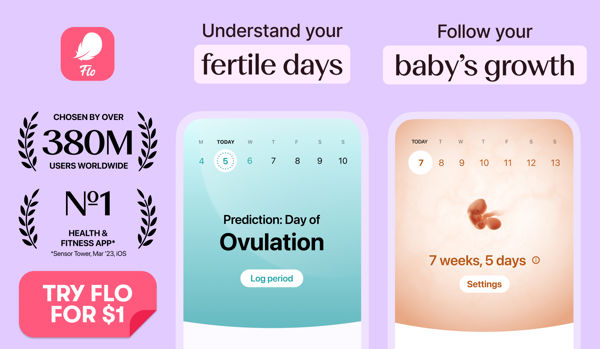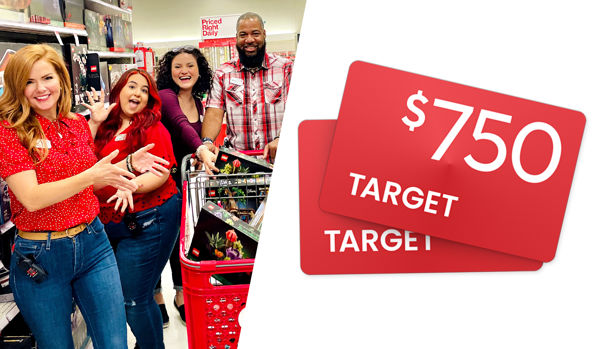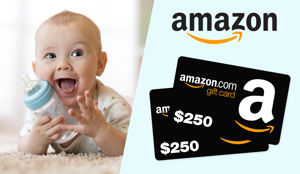When your baby starts getting towards five to six months old, a lot of your conversations will center around weaning. You'll receive no end of advice from friends and family about when to start and what foods to start with.
Bear in mind that the official guidance and recommendations have probably changed since your own upbringing The World Health Organization recommends that mothers breastfeed their child exclusively for six months. After six months, it is recommended that the mother begins to integrate complementary foods while still breastfeeding. This allows the child's digestive system and kidneys to have developed enough to cope with solid foods, and without causing shock to their digestion. This is also the recommendation outlined by the US Center for Disease Control.
For children born with special conditions or birth defects, it is still recommended to breastfeed, even more so in fact. According to the CDC, babies with birth defects may need extra support in order to breastfeed adequately but states that it is still vitally important for them to consume breast milk. Mothers of these children may need to use alternative means like bottle feeding or nursing support in order to successfully breastfeed but should still try to exclusively breastfeed for the recommended six months, or as long as is possible.
“Is my baby ready?”
There are a number of signs to look for to see whether your baby is ready for weaning. These signs typically apply to any baby, whether they are weaning from a boob or bottle.
The first signs are related to physical development. Your baby should be able to lift and hold their head up independently, and without eventual slouching or rolling forward. They should be able to focus on an item and attempt to pick up it up and bring it to their mouth. Be mindful that these items they grab for are actually edible as babies are fascinated with this new skill and will try to put many things in their mouths. They will miss on occasions, but this motion is great for encouraging their understanding of feeding and encourages them to exercise grabbing and lifting. As you may expect, the beginning stages of weaning results in a lot of “Here comes the airplane” feeding theatrics until your baby can successfully get enough food into their actual mouth, and not just on their face.
The final physical sign is whether your baby can chew and swallow foods. This is obviously a tricky one to test out before you have actually started weaning, so keep an eye on what happens when they bring a toy or spoon to their mouth. If they are showing signs of a chewing motion in their mouth, they may be ready for introducing some soft foods. Your child can begin weaning even if their first teeth have not appeared yet, as their gums are hard enough to ‘mash’ soft foods to a consistency that can be swallowed.
You will notice that your baby will watch you when eating, and may attempt to put their little hands on your food. This is a normal sign of bonding! They are beginning to recognize that you are eating, and to them, it means that they should also be eating. When they first begin weaning and learning how to eat normal foods, much of their behaviour will be a result of mimicking you, since they frankly have no idea where to start, so expect to see them staring at you while you eat.
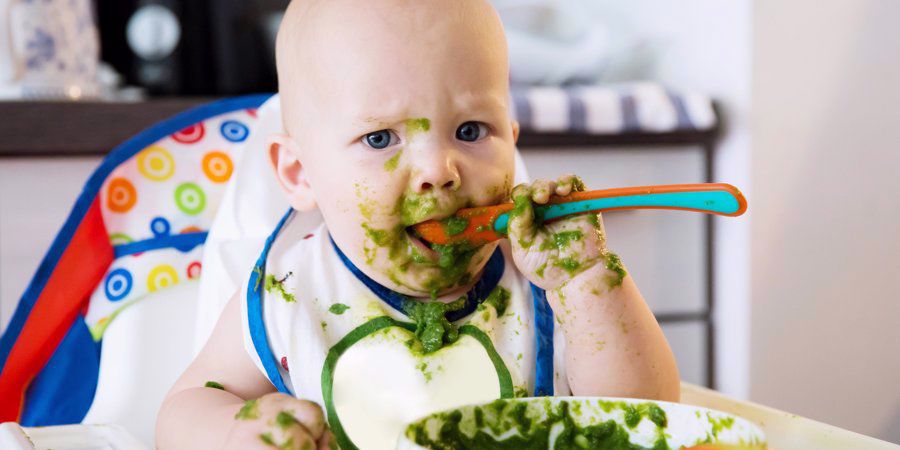
The Process of Weaning
“How should I wean my baby?”
There are two approaches to weaning that are most popular and effective across the board. Every baby is a little different though, so don’t be discouraged if a popular technique does not work for your little one. It will become a hot topic of conversation but try not to compare your baby's progress or likes and dislikes to others. It is important to note that throughout weaning, your baby is still breastfeeding or formula feeding. Weaning is a slow process and you still have to ensure they’re consuming enough calories and nutrients to continue growing.
Traditional Weaning
Traditional or spoon-fed weaning has been used by parents for hundreds of years. The principle behind it is that you start with feeding your baby basic tastes and smooth textures, and then build up to incorporate all food types. You are responsible for feeding your baby, with a spoon or fork or airplane, in some cases.
Most parents like to start with pureed food when weaning their baby, and manufactured lines of baby food now offer a number system for what level of weaning they are at, much like diaper sizing. Warm cereal like cream of wheat or grits may also be a good starting point since they have a very soft texture that you can make more or less liquidy. Since you are only complementing their diet of breastmilk or formula at this point, you also have to option to make their cereal with breastmilk or formula. Yogurt may also be a good option but you should be picky about the type you choose. Dairy may be difficult at this point for your baby’s digestion so a lactose-free option may be better to start with. You also want to be mindful of sugar content in yogurt if you do go that route.
Baby-led Weaning
Baby-led weaning contrasts the spoon-fed approach in that the baby has control over how they eat. The principle is that you give your baby finger foods to eat, and they feed themselves. You may also give your child some food in a bowl and they use the spoon. If you choose this approach, you will still spend some time supervising to ensure no choking happens. There will also be a good amount of clean up afterwards, as you can imagine.
An example of soft foods to start with, farther along in weaning;
- Cooked vegetable sticks like baby carrots
- Omelette strips
- Mini breadsticks
- Pasta
- Baby rice snacks, which typically dissolve in their mouths
A lot of parents do not incorporate meat into their baby’s diet until they are fully capable to chew and swallow freely. You will want to start small, like with cut up hot dogs, before moving up to more complex chewing tasks like with most other meats. It is advised not to feed your baby fish until you are aware of any food allergies they may have developed, which usually is determined by 6 months of age, but takes careful testing in small portions.
Safety
Many parents are anxious about weaning because they are worried that their baby will choke on foods. However, the risks of choking are low if you take some simple steps at each meal.
Start mushy, and work your way up. Weaning takes time and you may have your baby on purees for months before they’re ready to start chewing. When you do start with solid foods, keep an eye on the size of pieces of food or spoonfuls that your baby can comfortably fit in their mouth.
Don’t be afraid to step in if they do put too much in their mouth, it’s a good lesson in portion control. During the first few stages of weaning, stay with your baby at all times when they are eating, especially if you are taking the baby-led approach. Make sure you cut up items such as grapes and cherry tomatoes which could get stuck in your baby’s throat. There is a risk of botulism from honey, so do not give that to your baby until they are over twelve months. You should also steer clear of shark, swordfish and marlin. You will also want to take the time to carefully introduce your baby to common food allergies, some of which include fruit. You can always have them tested to avoid any mishaps, but introducing it in very small amounts will only prompt a very subtle reaction in most cases. If you have any doubt about an allergic reaction, consult your baby’s pediatrician before running any trials to know what to look for and when to seek emergency help.
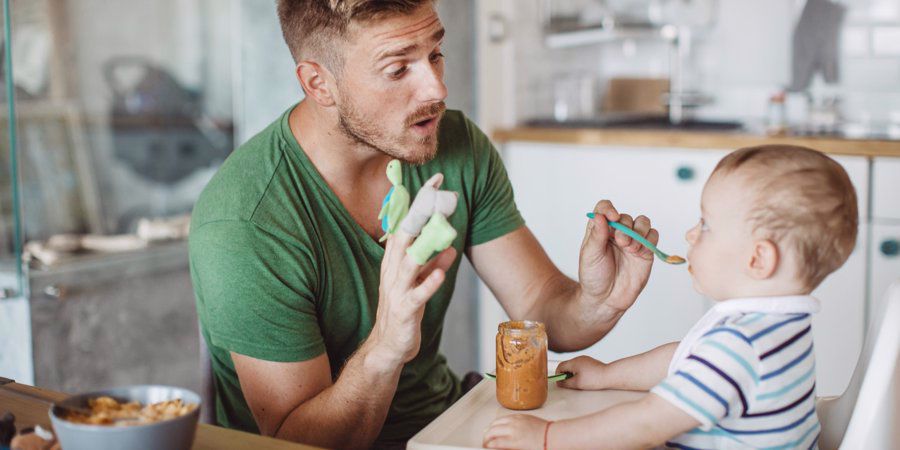
What will I need to buy?
There are a few items that you may not already have which you will need to purchase for weaning, and for their growth in general.
Highchair
You will need some form of a seat for your baby to sit in whilst feeding, with most parents choosing a traditional highchair. There are many options to choose from including booster seats and seats which attach to your table. Whichever one you choose, make sure that there is enough room for your baby to wiggle around but not with so much room that they can slide out. Your child needs to be sitting upright to allow their food to move through their digestive system properly. In the early stages, you could use extra padding to keep your baby in position but make sure this is not restrictive.
Cover-Ups
If you are concerned about your baby getting their clothes messy, you may want to invest in some different bibs or protective clothing. The normal cloth bibs will absorb foods and liquids very quickly which can be difficult to fully clean off; nothing stains more than sweet potato puree! Other options you could look at are plastic bibs or ‘coveralls’ or you could use some old t-shirts or shirts cut to size. Make sure that whatever you buy is will either wipe clean or is machine washable or disposable.
Spoons
You don’t necessarily need to buy extra feeding bowls or plates, but it may be in the best interest of your dishes if you plan to keep them very long. Look out for ‘picnic’ ranges of plastic items, as these tend to be cheaper than specific baby items. You will need to buy some soft spoons though, to avoid scratching your baby’s mouth. These tend to have long handles for easy grabbing.
Cleaning Products
Weaning is messy, there is no avoiding that fact. Even if you are doing baby-led weaning and no purees, you will still need a dustpan and brush and something to clean off the inevitable finger painting that will occur. If you have carpet, try to find something you can put under the highchair to absorb spills. It will need to be a good distance wider than the highchair too. Old newspapers spread out would work fine, or a small tarp. Feeding and weaning to solid foods really is best done over tile or wipeable floors.
You may want to buy some ‘easy’ cleaning products such as wipes or spray mop. Although standard baby wipes are great for a quick wipe over, it is advisable to give the highchair and other surfaces a good clean at least once a week. When things do get messy, try not to ‘hover’ with a cloth or wipe, especially around your child as this can give them the wrong message about eating. Their eating habits will improve and the level of mess will reduce quickly. Let them finish entirely and start by cleaning them off first and get them situated somewhere else or with something to do, then go to clean the highchair.
Simply click here and enter your details for your chance to win a $250 Amazon spend today!
A healthy approach
However you decide to wean your baby, whether that’s following a traditional or baby-led approach, make sure it’s right for your baby and your family as a whole. The most important thing is not how many different foods your baby likes, but promoting a positive relationship with food and eating. There will be many more ‘phases’ of eating for your child, possibly including a ‘fussy’ phase just when you think you’ve got it nailed. If you can demonstrate that food is there to be enjoyed and nourishes their body, they will grow into adulthood with the right attitude.


